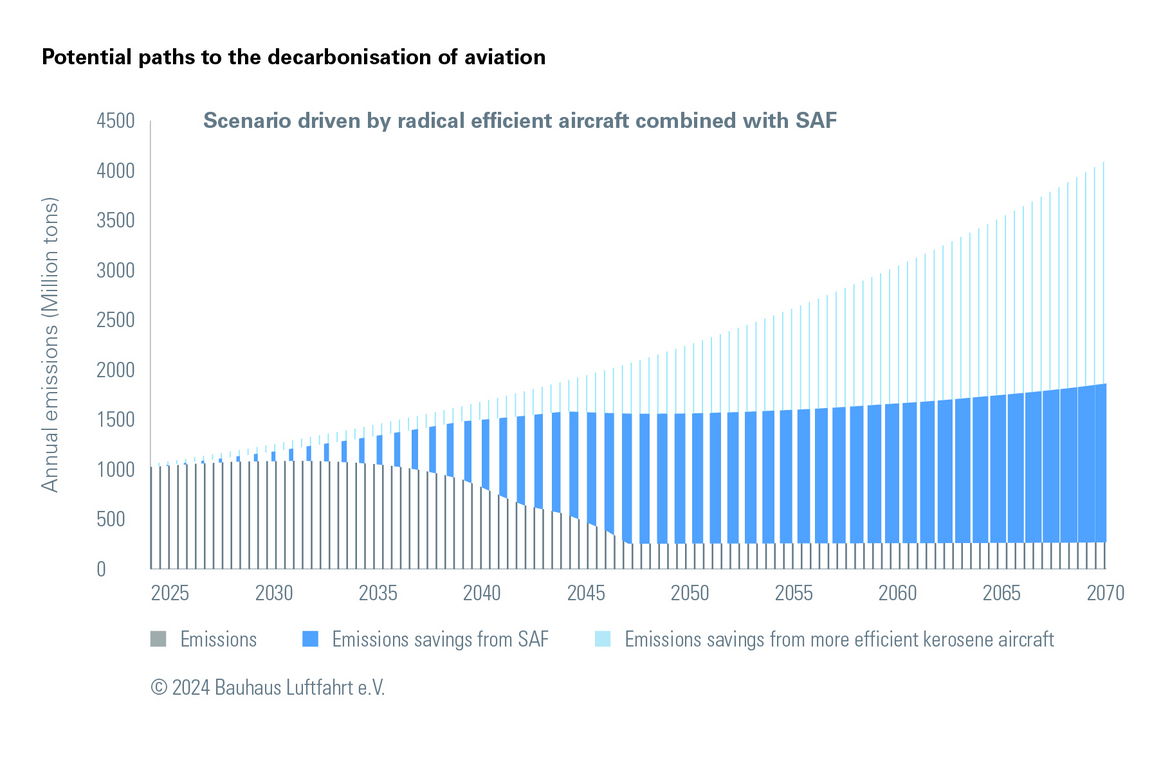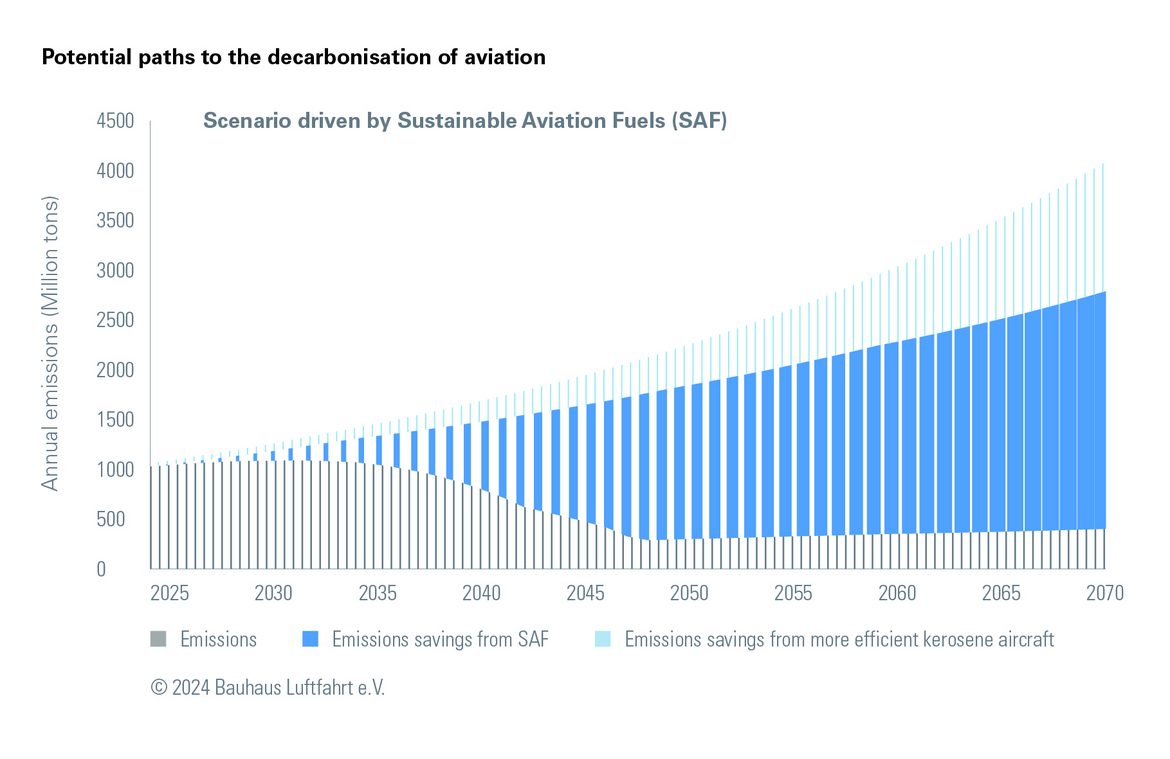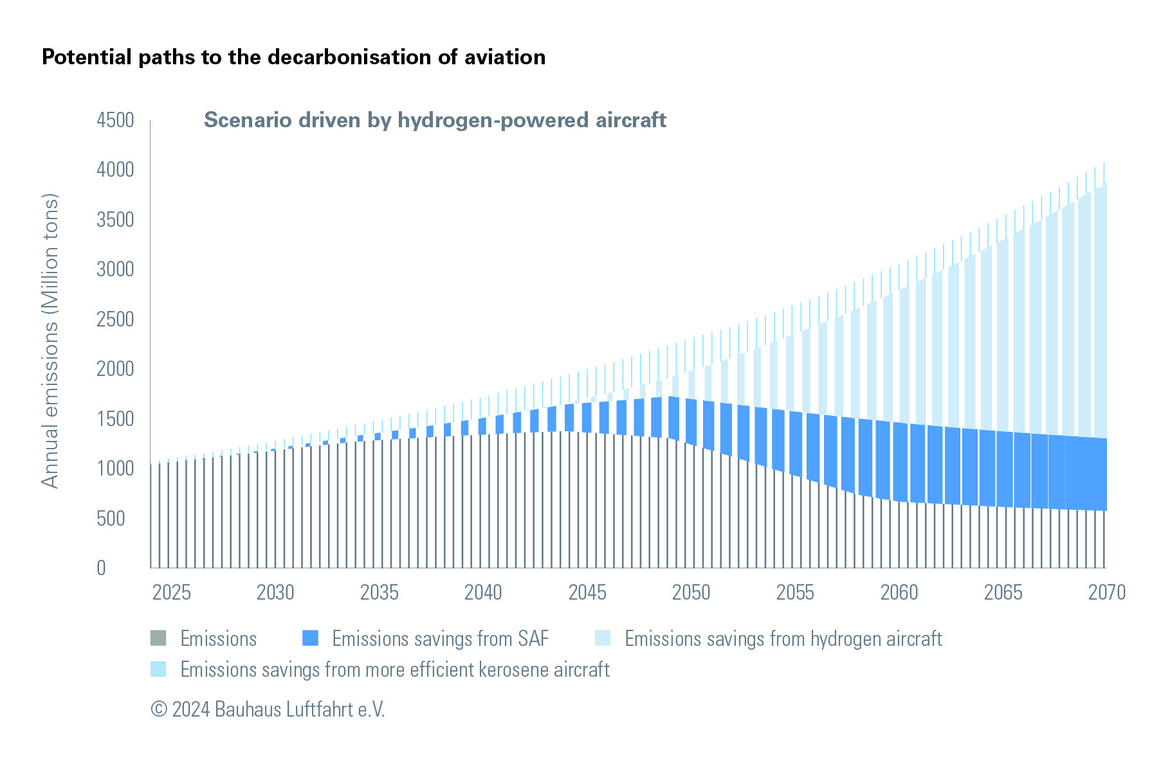Growth projections show that the aviation industry will not be able to decarbonise by 2050 if it follows the trend of incremental improvements. But what other, more radical paths can be taken to achieve climate-neutral aviation? Bauhaus Luftfahrt outlines scenarios that consider the market launch of technologies such as hydrogen-powered aircraft, radically more efficient aircraft and production volumes of synthetic sustainable aviation fuels.
Over the past three decades, technical and operational improvements have helped aviation to dramatically reduce CO2 emissions per passenger-kilometre. “However, to achieve climate neutrality by 2050, aviation must overcome the current lack of sufficiently mature decarbonisation technologies, the necessary infrastructure and sufficient investment. There is also uncertainty about the long-term political framework. What matters now is speed and radicalism across the entire aviation system,” explains Prof. Dr. Mirko Hornung, Executive Director Research and Technology at Bauhaus Luftfahrt. To support industry and policymakers, the think tank’s scientists are developing scenarios that outline potential pathways for the introduction of technologies, the availability of sustainable fuels and liquid hydrogen, and policy measures. Three cornerstone scenarios are presented below:
In the “Sustainable Aviation Fuels (SAF)” scenario, SAF achieves the main share of the decarbonisation, complemented by more efficient conventional aircraft. These are introduced for different market segments between 2030 and 2035 and are at least 15 per cent more fuel efficient. A significant increase in SAF production of 17 per cent per year between 2020 and 2050 brings aviation closer to decarbonisation around 2050. This growth will be driven in particular by power-to-liquid fuels based on direct air capture technology, which removes CO2 from the ambient air. The remaining emissions come from the production and transport of these fuels and will need to be offset through market mechanisms.
The “radically efficient aircraft combined with SAF” scenario combines the significant SAF from the previous scenario with revolutionary kerosene-based aircraft. Here, new aircraft concepts that consume 50 per cent less fuel are introduced between 2040 and 2045. As a result, decarbonisation is achieved slightly faster and with moderately lower cumulative emissions than in the SAF-only scenario. In addition, lower fuel consumption leads to lower fuel costs (SAF is two to three times more expensive than kerosene) and lower Scope 3 residual emissions (e. g. from production).
The “Hydrogen Aircraft” scenario assumes an aggressive introduction of hydrogen aircraft for different market segments between 2040 and 2050. SAF supply grows at a relatively moderate annual rate of 9 per cent between 2030 and 2070. In this scenario, aviation will not be decarbonised by 2070, even if Scope 3 emissions from the production and transport of SAF and liquid hydrogen are fully offset. However, decarbonisation by 2070 would be possible if kerosene aircraft were retired at a faster rate than assumed here.
Common to all scenarios is the significant need for mitigation of Scope 3 emissions. Indeed, in the SAF-led scenario, these emissions are in the range of 300 to 400 million tonnes between 2050 and 2070.
ILA Berlin, 5–9 June 2024
Bauhaus Luftfahrt will be co-exhibitor with MTU Aero Engines (Hall 2, Booth 310) and present the scenarios and other areas of research.
Communications Manager
silvia.hendricks[at]bauhaus-luftfahrt.net
+49 89 3074-849-78



